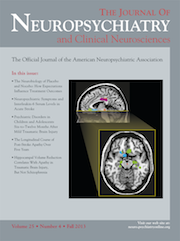70 Hours of Coma by Clozapine Intoxication
To the Editor: Clozapine has, over time, proved its mantel in management of treatment-refractory schizophrenia.1 However, despite its proven efficacy, a dangerous side-effect profile of clozapine has always been a matter of concern, which has limited its usage.2 Literature is relatively silent on antipsychotic overdose-induced coma. Only three studies have so-far documented later rare neuropsychiatric presentation, and all of them were from western countries. We present the first-ever report of clozapine intoxication leading to about 70 hours of coma in a young woman from India.
Case Report
“Ms. B”, a 23-year-old staff nurse, premorbidly well-adjusted, presented to the Casualty Unit in an unconscious state with the alleged history of consuming 20 tablets each of clozapine (100 mg), clonazepam (0.25 mg), and folic acid (5 mg) an hour before. She was reported to have been found lying beside her cot in an unresponsive state, with empty wrappers of the tablets scattered around her. No suicide note was left behind. On presentation, her Glasgow Coma Scale (CGS) score was 6/15 (E1, V1, M4); blood pressure was 88/60 mm Hg; pupils were small-sized but still reacting to light, and her bilateral plantars were equivocal. Her electrocardiogram showed mild QTc prolongation, with ST depression and T-wave flattening, along with tachycardia and signs of respiratory depression. She was immediately shifted to the critical care unit, intubated, and mechanically ventilated. A gastric lavage was performed with activated charcoal. Her MRI brain, abdominal ultrasound, hepatic and renal functions, and an arterial blood gas analysis revealed no significant abnormality. Her chest radiograph suggested a right-sided pleural effusion without evidence of pulmonary embolization. Her EEG showed<50 μV amplitude generalized background discharges. Her total leukocyte count and absolute neutrophil count were repeatedly found to be normal. There was no evidence of seizure; myocarditis; head injury; or signs of physical, genital trauma, or sexual abuse.
For the next 70 hours, the patient remained comatose, and moved her limbs transiently on painful stimulus with preserved doll’s eye sign. Unexplained tachycardia (138 bpm) continued for the initial 48 hours and spontaneously settled of its own. Her GCS score improved to 13/15 (E4, V4, M5) as she regained consciousness. It was followed by fluctuating sensorium, intermittent disorientation, and labile mood, with paroxysmal drowsiness for the next 3 days. Armodafinil 25 mg bid was initiated, and shortly afterward, she improved in her drowsiness as well as delirium. Psychiatric evaluation revealed major depression, and the Becks Suicide Intent Scale showed a score of 27. She was started on escitalopram 10 mg/day, and armodafinil 50 mg/day was continued. She was discharged from inpatient psychiatric services by Week 2 after substantiative improvement.
Discussion
Contrary to earlier reported cases,3–5 in which as much as 5 g of clozapine could induce only 48 hours of coma, our index case showed clear discordance with reference to expected duration of recovery and the relative number of hours of coma heralded by as low as 2 g of clozapine. Fortunately, unlike in agranulocytosis and myocarditis, clozapine-induced coma continued to show a benign course, with complete recovery, as seen in our case. The severe sedation of clozapine toxicity responded well to armodafinil 25 mg bid, signifying its role in the management of somnolence of clozapine overdose.5 Although research started almost a decade ago, the fatal dose of clozapine is not yet clearly established, unlike that of benzodiazepines, barbiturates, opioids, and tricyclic antidepressants; and, just to speculate, if the usage of clozapine as a means of suicide attempt continues, we wonder whether the demarcating fatal dose could become more clear in the future. To date, no specific antidote exists for clozapine or, for that matter, any other antipsychotic toxicity, and forced diuresis and even techniques of extra-renal depuration are not effective because of the largely hepatic route of metabolism. Management of such patients with supportive care, proper monitoring, and armodafinil still holds the key to the successful outcome.
1 :
2 : Clozapine versus other atypical antipsychotics for schizophrenia. Cochrane Database Syst Rev 2010; 11:CD006633Medline, Google Scholar
3 : Monitoring of clozapine and norclozapine plasma concentration time-curves in acute overdose. J Toxicol Clin Toxicol 2000; 38:325–328Crossref, Medline, Google Scholar
4 : Clozapine-induced coma. J Nerv Ment Dis 1992; 180:58–59Crossref, Medline, Google Scholar
5 : Acute clozapine overdose: plasma concentration and outcome. Pharmacopsychiatry 1998; 31:149–151Crossref, Medline, Google Scholar



